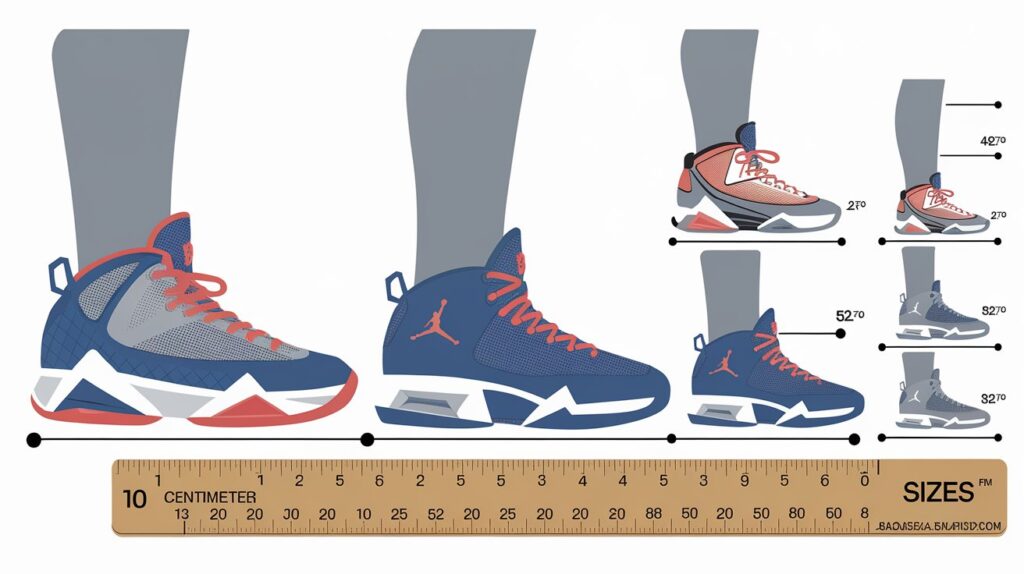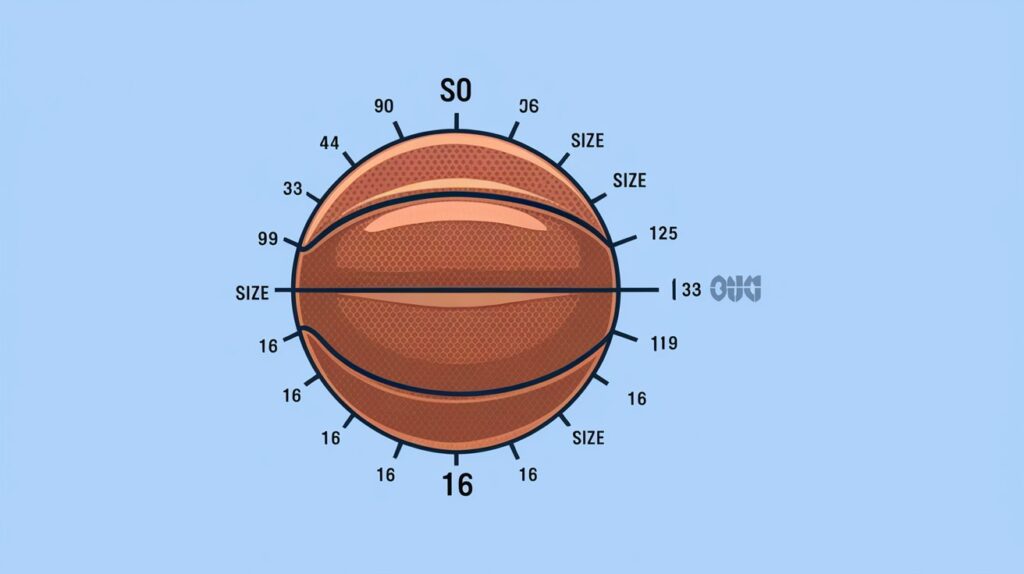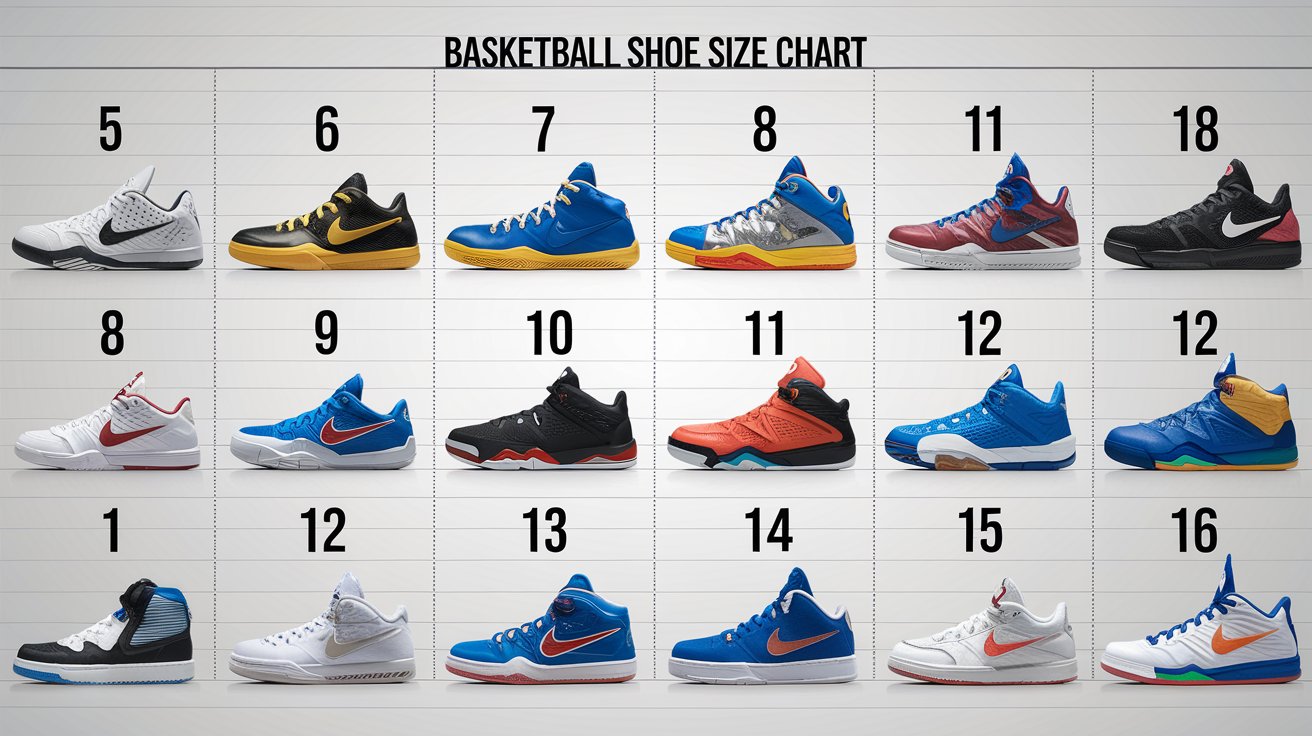Finding the right basketball shoe size is crucial for comfort, performance, and injury prevention on the court. With numerous sizing conventions and a wide range of options—from basketball shoes size 2 5 all the way up to size 17 basketball shoes—it can be confusing to pick the right pair. This guide walks you through everything you need to know about sizing basketball shoes for men, women, and youth, without the complexity of extra international measurements.
Why the Right Basketball Shoe Size Matters
- Performance: Shoes that are too loose or too tight can hinder quick movements, cuts, and jumps.
- Injury Prevention: Properly fitted shoes provide the necessary support and reduce the risk of blisters, ankle sprains, or other foot-related injuries.
- Longevity: Correctly sized basketball shoes tend to wear more evenly, extending their lifespan.
Whether you’re shopping for basketball shoes size 8 5 (8.5), basketball shoes size 9 5 (9.5), or basketball size 6 shoes (US 6), ensuring a precise fit can make all the difference when you’re on the court.
How to Measure Your Feet

Step 1: Gather Materials
- A piece of paper
- A pencil
- A ruler or measuring tape
Step 2: Trace Your Foot
- Lay Paper Flat: Place the paper on a hard floor.
- Stand Firmly: Stand on the paper, distributing your weight evenly.
- Trace the Outline: Use the pencil to trace around your foot, keeping the pencil perpendicular to the paper.
Step 3: Measure Length and Width
- Foot Length: Measure from your heel to the tip of your longest toe.
- Foot Width: Measure the widest part of your foot.
Step 4: Repeat for Both Feet
Often, one foot is larger than the other. Use the bigger measurement as your base when selecting your size basketball shoes.
Basketball Shoe Size Chart (US, UK, EU)
Below is a general chart to help convert between US, UK, and EU sizes for both adults and youth. Always check brand-specific charts for the most accurate information. We’ve omitted Japan sizing to keep things simple and focus on the most commonly used formats for basketball shoes.
Men’s & Women’s Basketball Shoe Size Chart
| US Size | UK Size | EU Size | Foot Length (inches) | Foot Length (cm) |
|---|---|---|---|---|
| 2 | 1 | 33 | ~8.1 | ~20.5 |
| 2.5 | 1.5 | 34 | ~8.3 | ~21 |
| 3 | 2 | 34.5 | ~8.5 | ~21.5 |
| 4 | 3 | 36 | ~8.9 | ~22.5 |
| 5 | 4 | 37.5 | ~9.25 | ~23.5 |
| 6 | 5 | 38.5 | ~9.5 | ~24.1 |
| 6.5 | 5.5 | 39 | ~9.6 | ~24.4 |
| 7 | 6 | 40 | ~9.75 | ~24.8 |
| 8 | 7 | 41 | ~9.9 | ~25.2 |
| 8.5 | 7.5 | 42 | ~10.1 | ~25.7 |
| 9 | 8 | 42.5 | ~10.25 | ~26 |
| 9.5 | 8.5 | 43 | ~10.4 | ~26.4 |
| 10 | 9 | 44 | ~10.6 | ~26.8 |
| 11 | 10 | 45 | ~10.9 | ~27.6 |
| 12 | 11 | 46 | ~11.25 | ~28.5 |
| 13 | 12 | 47 | ~11.6 | ~29.4 |
| 14 | 13 | 48 | ~11.9 | ~30.2 |
| 15 | 14 | 49 | ~12.2 | ~31 |
| 16 | 15 | 50 | ~12.5 | ~31.8 |
| 17 | 16 | 51 | ~12.8 | ~32.5 |
Note: Foot-length measurements are approximate. Always consult the shoe brand’s official size guide.
Youth Size Basketball Shoes
Youth sizes typically start around US 1 or 2 and can go up to US 6 or 7. For instance, size 7 basketball shoes could still be considered youth if the brand labels them as such. Typically, once you move beyond size 7, you’re venturing into adult sizing.
Tips for Choosing the Right Basketball Shoes Size

- Try Shoes Later in the Day
Feet can swell throughout the day, so trying on shoes in the afternoon helps get a more accurate fit. - Wear the Right Socks
If you plan to wear thicker basketball socks, try shoes on with those to ensure they aren’t too tight. - Check Toe Room
Aim for about a thumb’s width between your longest toe and the front of the shoe. This is especially important for players who rely on explosive movements and need room to maneuver. - Lock In the Heel
The heel area should feel snug, preventing unnecessary slipping during quick pivots or jumps. - Don’t Overlook Width
If you have wide feet, look for brands that offer multiple width options. Otherwise, consider sizing up slightly for added comfort. - Assess Brand Differences
Some brands run larger or smaller. For example, if you’ve previously purchased basketball shoes size 8 5 (8.5) in one brand and found them too tight, you may need a size 9 in another brand. - Check Reviews
Reviews can be invaluable, especially if you’re looking for basketball shoes size 9 5 (9.5) or size 17 basketball shoes—larger or half sizes can have different fits depending on the manufacturer.
Common Mistakes to Avoid
- Assuming All Brands Fit the Same
Each brand has its own last (mold) design, so a US 9 from one brand can feel like a US 9.5 in another. - Ignoring the Purpose
While all basketball shoes aim to support similar movements, choosing low-tops vs. high-tops can change how they fit around the ankle. - Skipping Measurement
Relying on old shoe sizes without re-measuring can lead to a poor fit, especially if your feet have changed over time. - Buying Shoes Too Big for Growth
For youth, it can be tempting to buy bigger sizes to make them last longer. However, overly large shoes compromise stability and can cause ankle twists or foot pain.
Making Sense of Specialty Sizes
- Basketball Shoes Size 2 5 (2.5) or 3: Often children or smaller youth sizes.
- Basketball Shoes Size 8 5 (8.5) or Basketball Shoes Size 9 5 (9.5): Common adult or teen sizes.
- Size 17 Basketball Shoes: Extra-large options for those with bigger feet—these can be harder to find, so consult brand-specific size guides and potentially look for specialty retailers.
If you’re looking specifically for a basketball size 6 shoes or size 7 basketball shoes, note whether the brand categorizes it under youth or adult sizing. This helps determine the shoe’s overall structure and fit.
Final Thoughts
Whether you’re shopping for youth size basketball shoes or basketball shoes size 9 5, the key is to measure accurately and consider the brand’s nuances. Pay attention to factors like foot length, width, and how shoes lock in your heel. A proper fit can amplify your on-court performance and reduce the risk of injuries.
Remember to check reviews, brand-specific charts, and return policies before making a final decision. From basketball shoes size 2 5 for younger players to size 17 basketball shoes for those with larger feet, there’s a perfect basketball shoe size out there for everyone—just take the time to find it!



Leave a Reply